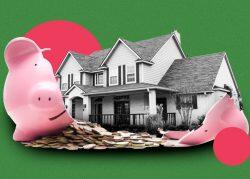As rising demand continues to shake up the Austin residential market, the looming appraisal season is presenting landlords with some difficult choices.
Landlords across the city are facing sharp cost increases driven by inflation, as reported by Austonia, with the median home price in the city of Austin reaching a staggering $640,000 in April 2022, up 16.3 percent from last year. In Travis County alone, that number reached $625,000, and so far a record 167,789 property owners have filed protests against appraisal notices.
This has left many property owners in the city with two choices: absorb these expenses or pass them on to their tenants, who are already pressured by rising costs of their own.
“A lot of renters today are probably at their threshold of what they can afford as it is,” said Matt Matza, president of Austin-based rental financing company Visio Lending.
Read more


“And I think most landlords are probably pushing rents much further than that to accommodate the increase in expense load that landlords are experiencing,” Matza said.
Landlords are not eligible for property tax discounts through the Homestead Act, according to the publication, and some property owners like Matza have shifted to short-term leases to attract a larger pool of migrating remote workers flocking to the city.
Incoming residents are rapidly raising real estate values in the city, but that growth has in turn put pressure on the rental market.
Landlords like Matza are doing what they can to accommodate and keep tenants, even as some take advantage of their home’s sky-high value to make a profit.
“For a lot of good landlords, and I’d like to think of myself as one, you want to have low turn-and-churn,” Matza said.
“We’re trying to help with the housing systems in Austin while making an appropriate return on our investment. You need to be cognizant of what your tenant can pay candidly… if your property taxes went up 40%, you can’t push all that through to your tenant.”
Even as more single- and multi-family properties crop up in the Austin market, Matza says he hopes the post-pandemic slowdown could provide relief for both landlords and renters. While inventory in the city is still low, listings rose more than 15 percent from April to May 2022.
[Austonia] — James Bell
